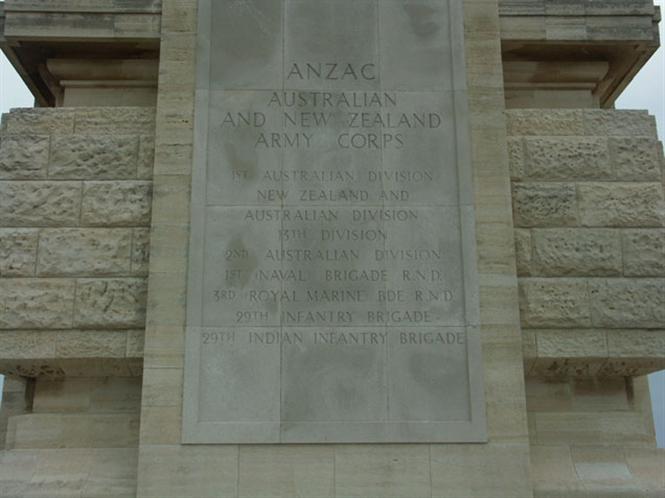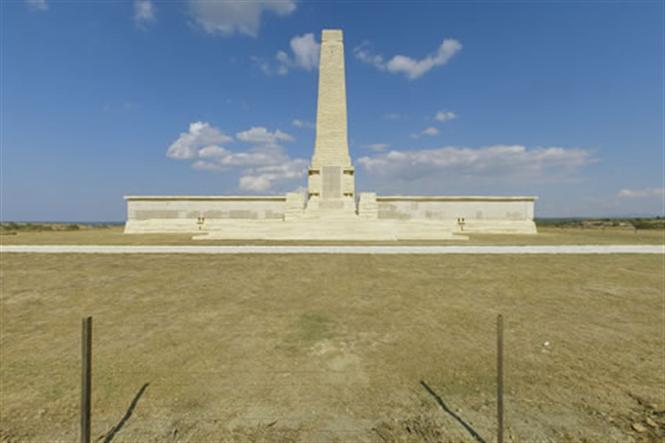CWGC Memorial To The Missing, The Helles Memorial
Description
The Helles Memorial takes the form of an obelisk over 30 metres high that can be seen by ships passing through the Dardanelles. The Panel Numbers quoted on the memorial relate to the panels dedicated to the Regiment served with. In some instances where a casualty is recorded as attached to another Regiment, his name may alternatively appear within their Regimental Panels. Please refer to the on-site Memorial Register Introduction to determine the alternative panel numbers if you do not find the name within the quoted panels. The largest number of names are from the Lancashire Fusiliers (1,357 commemorations) on Panels 58-72, and the Manchester Regiment (1,215 commemorations) on Panels 158-170.
History
The eight month campaign in Gallipoli was fought by Commonwealth and French forces in an attempt to force Turkey out of the war, to relieve the deadlock of the Western Front in France and Belgium, and to open a supply route to Russia through the Dardanelles and the Black Sea. The Allies landed on the peninsula on 25-26 April 1915; the 29th Division at Cape Helles in the south and the Australian and New Zealand Corps north of Gaba Tepe on the west coast, an area soon known as Anzac. On 6 August, further landings were made at Suvla, just north of Anzac, and the climax of the campaign came in early August when simultaneous assaults were launched on all three fronts. However, the difficult terrain and stiff Turkish resistance soon led to the stalemate of trench warfare. From the end of August, no further serious action was fought and the lines remained unchanged. The peninsula was successfully evacuated in December and early January 1916.
The Helles Memorial serves the dual function of Commonwealth battle memorial for the whole Gallipoli campaign and place of commemoration for many of those Commonwealth servicemen who died there and have no known grave. The United Kingdom and Indian forces named on the memorial died in operations throughout the peninsula, the Australians at Helles. There are also panels for those who died or were buried at sea in Gallipoli waters. The memorial bears more than 21,000 names.
Construction Information
Designed by Sir John Burnet, the Helles Memorial was completed in 1924 and is built of rough stone from Ilgardere. On 4 May 2010 structural work is due to commence on the Helles Memorial. The first phase of the work will comprise of the reconstruction of the south and east sides of the memorial wall and the replacement of nearly 100 of the 533 panels. While the work is taking place there will be no access to those panels being replaced. The remainder of the memorial will be fully accessible. For more information please contact The Commonwealth War Graves Commission, enquiries section on 01628 507200.
Location
Helles, Turkey.
The Anzac and Suvla cemeteries are first signposted from the left hand junction of the Eceabat- Bigali Road. From this junction travel into the main Anzac area. Follow the road to Helles, opposite the Kabatepe Museum, at 14.2 kms, take a right turn at the 'T' junction and at 14.3 kms take the left fork. After a total of 22.8 kms, take a right turn. The memorial is 500m along a rough track and stands on the tip of the Gallipoli Peninsula.

